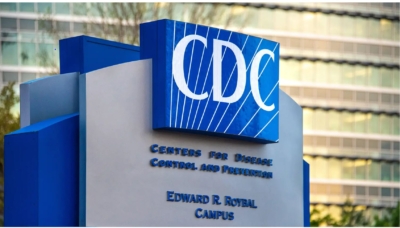BY DR. ALLISON SUTTLE, OPINION CONTRIBUTOR — 04/18/19 01:15 PM EDT 11
Doctors want to innovate.
Patients want access.
Congress can make both things happen by updating policy and payment models for telehealth.
As a physician with Sanford Health, I’ve been practicing telehealth since I was a resident in the late 1990s – since the first time a patient called me to ask about a fever. At the time, there was no expectation of being reimbursed for that kind of personal care. But there also was only so much I could do over the phone.
Now, technology allows us to practice medicine on such a deeper level – such as remote monitoring and electronic health records.
And with that level of care available, it’s time for policy and payment to catch up with technology.
Three out of four U.S. hospitals connect using video or other remote monitoring technologies, according to the American Hospital Association. It’s in our best interest – telemedicine and remote monitoring can help us maintain or improve quality and access at a lower cost, including for behavioral health, chronic care management and patient engagement.
But that requires reducing limitations on Medicare coverage and increasing reimbursements.
The American Hospital Association recently weighed in on a request from the Congressional Telehealth Caucus, a bipartisan coalition of senators already supporting these technologies, and advised how to fund and accelerate the move to access.
It’s the right move.
Physicians have the technology they need to improve patient care, and patients have the desire to use telehealth services to improve their health.
But when the government restricts coverage, even the most eager physicians give up.
When it works, costs go down
Evidence shows that when patients with private coverage use telehealth services through their employers, health plans or health systems, access to and quality of care goes up while costs go down.
Programs like the telehealth hospital-at-home program pioneered by Johns Hopkins Medicine in Baltimore and Presbyterian Healthcare Services in Albuquerque extend the reach of practicing physicians and bend the cost curve. Both programs use face-to-face physician-to-patient interactions to address and manage conditions with defined treatment protocols.
At Johns Hopkins, total costs of at-home care dropped by 32 percentwhen remote monitoring and communications equipment was placed in patient homes. The Albuquerque program – which addresses patients with pneumonia, COPD and CHF – reduced costs by 19 percent.
Benefits for rural America
According to the National Center for Health Statistics, the patient-to-primary care physician ratio in rural areas is 39.8 physicians per 100,000 people, compared to 53.3 physicians in urban areas.
My own employer, Sanford Health, is the largest private provider of health care in rural America, with hundreds of clinics, 44 hospitals, 1,400 physicians and more than 200 senior care locations in 26 states.
Yet our population is spread out over our footprint, which is roughly the size of Texas.
Consider mental health, drug abuse or addiction – issues that disproportionately affect those living in rural America. It’s a disparity that has been widening since 2001.
A 2018 study in the American Journal of Preventive Medicine found that a majority of non-metropolitan counties (65 percent) do not have a psychiatrist and almost half of non-metropolitan counties (47 percent) do not have a psychologist.
Or even chronic disease — a patient with diabetes in Harold, S.D., population 122, deserves the same care as one in Fargo, N.D., population 123,000.
Out here, with nearly 2 million people in our coverage area – fewer than in Houston, Texas – access means a three-hour drive to see a specialist.
We’ve been forced to innovate to meet those needs. Our specialists regularly travel by plane and by car to these communities and clinics, which are served by family practice physicians. And while that may save some time for patients who don’t have to drive, it also means they are at the mercy of that specialist’s travel schedule.
It’s an inefficient use of physicians’ time, and it’s not the timely access that patients might need.
Beyond that, it’s not a good use of health care dollars.
Telehealth is.
This week, Sanford Health announced a partnership with Tyto Care, a digital first-aid kit that allows patients to do their own physical exam, transfer the information to a physician and receive real-time feedback. A patient can share data on his or her lungs, heart or even a photograph of an eardrum.
It’s the house-call of the digital age.
Time for Congress to act
I urge Congress to reintroduce bipartisan legislation aimed at improving access to telehealth services.
The CONNECT for Health Act 3.0 removes barriers and creates alternative payment models and incentive programs to expand telehealth services and remote patient-monitoring programs for chronic care, remote and underserved populations – ultimately empowering providers to use these digital health platforms.
We commend Sen. John Thune (R-S.D.) for his leadership on the Congressional Telehealth Caucus and his unwavering commitment to ensuring that all Americans have access to the best telemedicine services.
Sen. Chuck Grassley (R-Iowa), chairman of the Senate Finance Committee, has vigorously fought for the health care needs of rural Americans throughout his nearly four decades of service. He has been a tireless champion for bipartisan solutions aimed at improving our health system and reducing health care costs, and we hope his colleagues in Congress will join him in his efforts to make sure that all Americans have access to the health care services they need and deserve.
Sen. Amy Klobuchar (D-Minn.) has been a champion for improving access to health care in underserved areas, including rural communities. As a member of the bipartisan Senate Rural Health Caucus, Klobuchar has long supported policies to enhance the quality and availability of health care for rural Americans and has worked with Thune to ensure that critical health care services, including telehealth, are available to those who most need it in rural communities.
As a physician, telehealth offers the same care I would provide to a busy mom who has to take time off work to visit the doctor, whose child misses school, who has to pay for gas to drive to an appointment.
We, as parents and spouses and friends, know how much our time is worth.
Now it’s time to show how much physicians’ time is worth.
Dr. Allison Suttle MD is Chief Medical Officer for Sanford Health, the largest rural health care system in the nation, with 44 hospitals in 26 states and nine countries. Headquartered in Sioux Falls, S.D., and serving the Upper Midwest, with nearly 1,400 physicians, Sanford Health is dedicated to several initiatives, including global children’s clinics, genomic medicine and specialized centers researching cures for type 1 diabetes, breast cancer and other diseases.







Leave A Comment